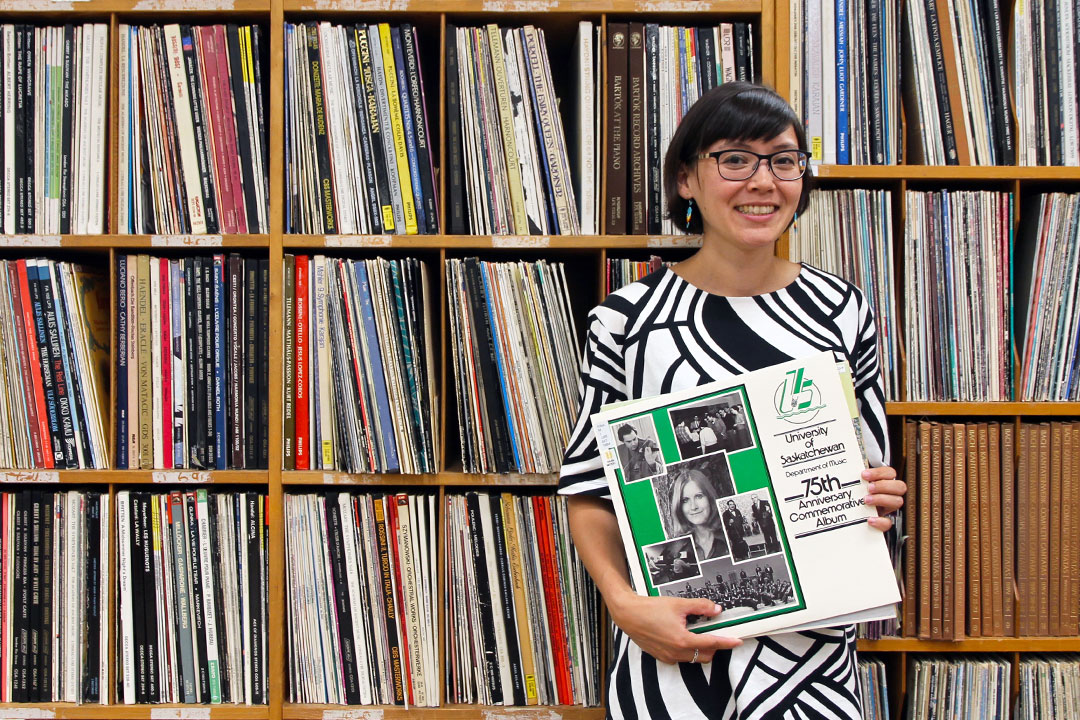
Preserving provincial pop
They don’t just make music. Etched within every groove of the archived vinyl records at the University of Saskatchewan Education Library is a fascinating story of the prairies past and present.
By Chris MorinOn one hand, the catalogued LPs give a glimpse into the past century of our province’s lively music scene. But for crate-diggers, students and music lovers alike, there is a deeper tale to be told. You just have to search for it.
For Carolyn Doi, music and education liaison librarian, the Sask History Online collection is a chance to help members of the music community connect with their roots.
“I’ve had conversations with people who have found something obscure from our collection that has meant something very personal to them,” said Doi.
“I talked to one person who found an album that her grandmother sang on. She was able to listen to those recordings for the first time ever and then play them at her grandmother’s 90th birthday in Ontario. They didn’t have a copy of the record. I love hearing stories like that.”
While many pieces in the collection are records and CDs, other items include sheet music and other pieces of memorabilia, including a box-set from folk singer Buffy Sainte-Marie and a signed copy of the now-infamous Rolling Stone issue with The Sheepdogs gracing the cover.
While many of these pieces help tell the story of music with a Saskatchewan connection, the aim is to make digital copies of the physical objects, as many of them— some over a century-old—are rare, one-of-a-kind items. Others, such as the 45-records with sleeves held together with pieces of thick tape, are delicate and fragile.
“Some of the earliest items are dated from as far back as 1906, and as you go forward you can see the development and advancement of sound recording technology,” said Doi, who estimates that there are nearly 4,000 pieces in the collection. There are some challenges with preserving the gems of the past.
While it’s fairly straightforward to digitize a CD, finding a player for an 8-track tape or a reel-to-reel recording is an ongoing process. Same goes for the player piano rolls, said Doi. Using a ripping program to import the pieces into a digital format, Doi said that even the artwork for the album cover is added into the collection.
“Sometimes people may not remember the name of what they are looking for, but they will recognize the cover when they see it,” she said.
And while many of the pieces are donated, finding additional LPs and CDs to be catalogued is also something of a scavenger hunt—another challenge that Doi said is a rewarding process.
“So many music creators reference the past when it comes to curating their own collections or radio shows,” said Doi. “And so many people are releasing music on vinyl and cassette tapes again that we are collecting those pieces again. It’s something that I find that a lot of students are getting excited about.”

